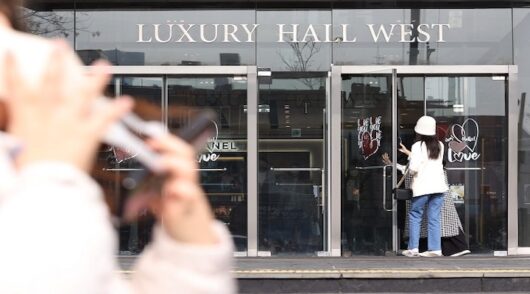Sportswear retailer Under Armour sales fell by 1 per cent in the first quarter in the face of aggressive competition from established brands.
And the company posted a first quarter net loss of $2.3 million, its North American revenue down 1.1 per cent “as new distribution was more than offset by the absence of business lost to bankruptcies in 2017,” the company said.
The retailer’s sales, however, climbed nearly 7 per cent to $1.12 billion from $1.05 billion the previous year, boosted by increases in wholesale and direct-to-consumer revenues.
“After a long run of outperformance, it is clear that Under Armour is now entering a more challenging period,” said Neil Saunders, MD of GlobalData Retail.
“Although growth is still present, the overall pace of expansion is relatively modest and a pale imitation of the uplifts the company has historically delivered.
“Some of this is down to the disappearance of a number of sports retailers due to bankruptcies, a dynamic which reduced Under Armour’s wholesale revenues,” Saunders said. “The liquidation process of these players also put pressure on prices in the market which suffered from the fire sale of stock at stores scheduled for closure.”
He said Under Armour responded with more discounting, something that played a part in reducing gross margins by 70 basis points. This, along with the fall in contribution from the higher-margin wholesale channel, contributed to a 90.7 per cent reduction in North American operating income.
Saunders said it would be unreasonable to expect Under Armour to continuously deliver high double-digit growth. “However, in our view, the sharpness of the reduction suggests that there are some underlying difficulties beyond this which are having an impact.
“All of this noted, we do not believe that the travails of the US sports market are solely responsible for Under Armour’s lackluster performance. Especially as a number of other sporting brands and retailers have done relatively well over a similar period.”
A step up in competition from players, including Nike and Lululemon, is one of the reasons for Under Armour’s slower growth. This has come at a time when the demand for sports and athleisure products is softening and has created a fundamental shift in the market from one where all players were benefitting from strong growth to one that is much more of a zero-sum game.
“In this environment, Under Armour has been found wanting,” said Saunders. “While we believe that the brand remains innovative, we do not believe it put its best foot forward over the first part of this year with a lack of range and product innovation making it difficult to generate consumer interest.”
He added the brand needs to do a lot more to stimulate demand over the rest of this year.
“Even so, our outlook on profits remains relatively gloomy,” Saunders said. “We believe that a push to more direct sales, including via e-commerce, will dilute margins. We also think that more marketing will be necessary to keep the brand on the consumer radar, which will likely have an impact on costs.”
Saunders said outside of North America Under Armour has much higher growth potential.
“Indeed, this quarter international revenues rose strongly. We believe that this engine will continue to spin rapidly over the rest of this year. However, the return on these investments will be somewhat lower than those made in Under Armour’s home market. This ultimately means that unless North American growth gets back on track, earnings will remain under pressure.”






